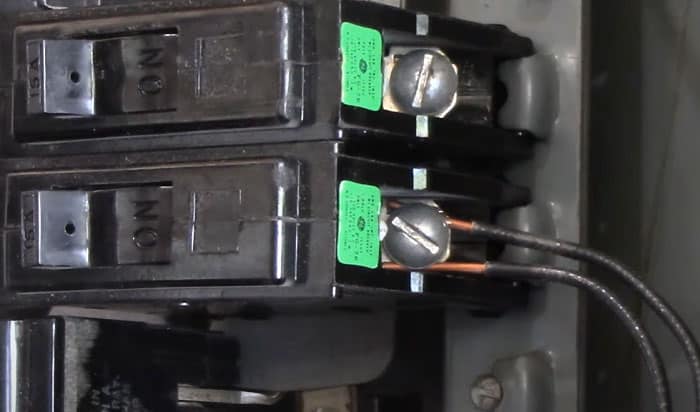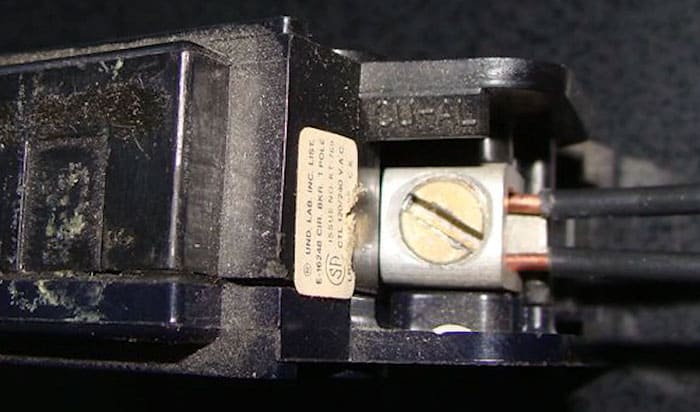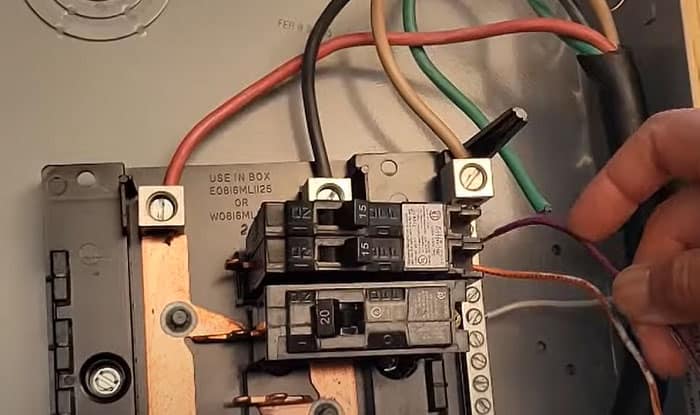Did you notice double-tap wires in your panel breaker? Do you want to know how to fix a double-tapped circuit breaker?
A breaker double tapped setup is not good for your electrical system because it may cause fires and destroy your property. That being said, here are a few tools needed and a step-by-step guide on how you can fix a double-tap circuit breaker.
Table of Contents
Tools You Need to Fix Double Tapping Electrical Wires
- Set of screws for disassembling the cover panel and the wire connection
- Rubber gloves for protection
- Pliers for taking off the knockout plates in the cover panel
- Non-contact voltage tester for ensuring the line has no electric current
- Flashlight for lighting up your working area
- New circuit breaker for adding a new circuit
A new breaker is needed for this tutorial. You can consider the amperage of your double-tapped connection when purchasing a new breaker.
Step-By-Step Guide to Fix Double Tapped Breaker?
Two wires in a single breaker terminal are not recommended, even if it is a square D double tap breaker. The terminal connection may loosen over time, bringing heat to the terminal or causing sparks.
There are several ways we can fix double taps in the electrical panel. Some of these use a pigtail connection and a tandem circuit breaker. However, I recommend adding a new breaker next to your current one, since it is much safer and will surely solve the issue.
Note: The first thing you always need to do when working on your breaker panel is shut down the main breaker and its subpanels. Also, make sure that no devices are currently turned on and connected to your electrical system. This is to prevent electrocution as well as to prevent damaging your device by a sudden loss of electrical connection.
Step 1. Disassemble the Panel Cover
To safely disassemble your panel cover, unscrew all the screws while holding tight the middle of the cover.
After taking out the cover panel, you can use your non-contact voltage tester to ensure there’s no power in any lines, especially in the line you need to work on.
Step 2. Install the New Circuit Breaker
You can now install a new circuit breaker in some empty space on your panel board.
First, separate the double-tapped connection. To do this, loosen the terminal connection and slowly pull out the wires. Separate the two wires in the breaker.
Connect one back to the old breaker and the other one to the newly installed circuit breaker.
Step 3. Bring Back the Cover Panel
Before covering the panel board, ensure that all the wires are safely aligned to prevent damage.
Additionally, you will need to take out the knock-out plates on the panel cover that matches where your new breaker is currently installed.
After this, you can screw back the panel cover and you’re done! You can now turn on all the breakers, including the main breaker and sub-breakers.
Note: This method only works for a panel with free space for a new CB. Otherwise, you would need to use a tandem circuit breaker or add a sub-panel.
Furthermore, calling a professional for help is a good decision, especially if you are not confident enough to do this kind of electrical work.
Watching this video made by Structure Tech Home Inspections will also show you the three ways to fix a double-tap circuit breaker.
It includes using the pigtail method, the tandem circuit breaker, or a new circuit breaker (the guide illustrated above).
How Much is the Cost to Fix Double Tapped Breaker
The repair cost depends on what kind of fixing you do on your double-tapped connection. A double tap breaker repair cost may range as low as $7 for a pigtail connection.
However, adding a new circuit breaker or a tandem breaker — as well as calling a professional to do the job—may cost you over $200.
Why Would Someone Double-Tap a Circuit Breaker Line?
Double-tapping circuit breakers are mostly done when the breaker panel is full, which means there is no space for the newest electrical connection.
Can You Double-tap Two Neutral Wires?
No, the neutral wires must be kept separate as well. The most typical connection for the old electrical panel is two double-tapped neutral wires. But why?
There were no clear regulations for double-tapping neutral connections in the older NEC or National Electrical Code edition. Furthermore, most electricians at the time were unaware of the UL 67 Standard.
UL 67 is a safety standard for panel board design, focusing on neutral wire termination. According to this standard, each neutral wire that could be put in an electrical panel board should have its own terminal connection on the panel board.
Double-tapping of two neutral wires is now prohibited, the same as double-tapping hot wires. The neutral wires can become loosened over time, causing a significant problem with your circuit. A loose terminal connection can heat up, generate a spark, and start a fire.
Furthermore, a double-tapping neutral wire connection prevents the circuits from being isolated.
It can add to your workload, especially when changing one circuit. It means that in addition to shutting off the circuit that needs to be repaired, you’ll also need to switch off the circuit that’s connected to it in your double-tap connection.
Repairing a double-tapped neutral wire is very straightforward. You wouldn’t need to call a professional electrician. All you need is a flat screwdriver to get it done in ten minutes. However, do not forget to turn off the main breaker to prevent electrocution.
Conclusion
How to fix a double-tapped circuit breaker? Although there are many ways to do it, adding a new breaker to separate the connections of your double-tap wires is the best option. This procedure is simple and may be completed by anyone, even a non-professional.
How about your electrical system? Does it have a double-tap connection? Do you think you can do the method above without calling a professional? Is there anything you want to know more about? You can share them in the comment section below.

I am Edwin Jones, in charge of designing content for Galvinpower. I aspire to use my experiences in marketing to create reliable and necessary information to help our readers. It has been fun to work with Andrew and apply his incredible knowledge to our content.



